Last updated on June 28th, 2023
Ice hockey is a hugely popular sport in territories like North America, Russia, and Europe. Yet, the sport so many have come to love today, has come a long way. Hockey is one of the world’s most popular sports, and specifically in the U.S with the National Hockey League (NHL) being the most coveted and the largest in the entire world. Having been founded on November 26, 1917, in Montreal, Canada, the NHL has 31 teams with 24 of the teams coming from the U.S and the rest from Canada. We look at some of the most interesting facts about Ice Hockey over the sport’s evolution.
1. The early hockey pucks were made from fecal matter. Yes, you read that correctly. Legend has it that hockey pucks during the early days were made from cow poop. The cow poop patty was frozen and used as a puck for games. The early days were definitely interesting times for ice hockey.
2. Frozen pucks are the order of the day. Even during the cow poop days, hockey pucks were frozen. This tradition continues today. Before each ice hockey game, pucks are frozen in an effort to ensure the game is safer for the players and the audience. This is because being frozen stops the pucks from bouncing during play.
3. The hockey puck today is made from hard rubber, has a diameter of about 3 inches, and weighs approximately 6 ounces. These hard, black, rubber pucks are still frozen before each game to prevent bouncing in and out of play and other potentially dangerous and uncontrolled movements.
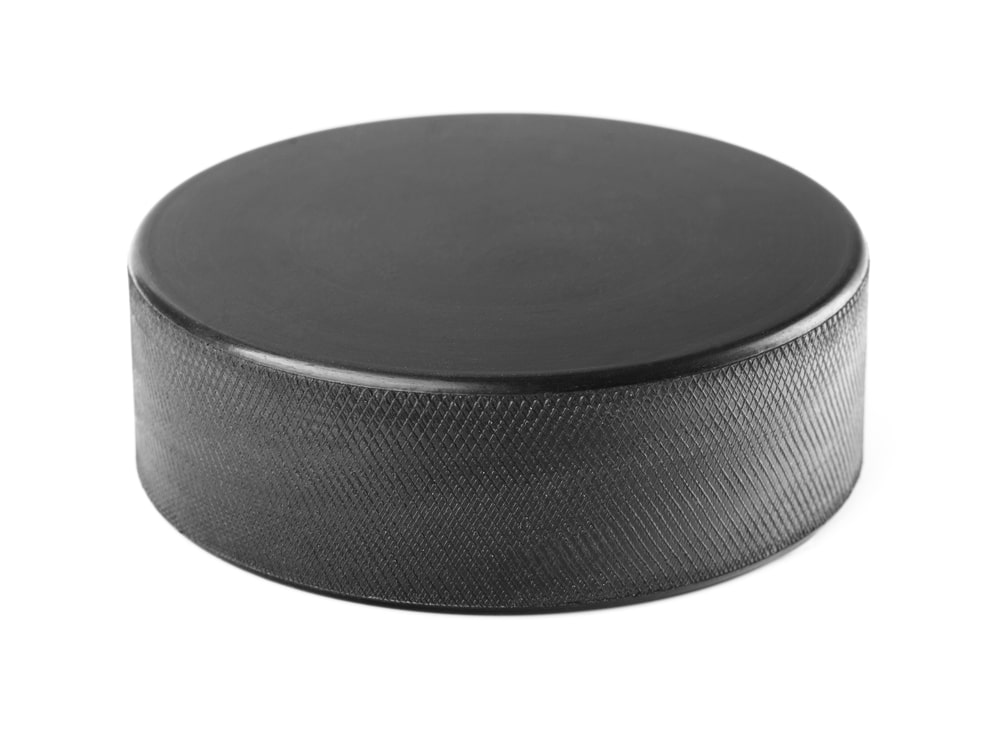
4. Speaking of rubber pucks, the first rubber pucks were made from Lacrosse Balls. When Ice Hockey first moved indoors, whole balls were used. However, rink owners found that slicing these Lacrosse balls into thirds and then keeping the middle would prove to be the better option. This standard design became official in 1885.
5. Although Hockey pucks, by design, have been used since almost inception, it is true that the word “pucks” did not become a thing until February 7, 1876. Since then, February 7 was dubbed the Hockey puck’s birthday.
6. On rare occasions hockey pucks have been split during games. Center Patrick Kane and forwards Andrew Procho and Shane Doan have each managed to break a puck against a goal post during their games.
7. While you can be anything in life, the last thing you want to be is a hockey puck. This is according to comic Don Rickles anyway. In the popular animated movie — the original Toy Story (1995) — Don Rickles’ cleverly coined insult was “don’t be a hockey puck.”
8. The average NHL game has a lot in common with a baker’s dozen… almost. While a baker’s doze is 13, the average NHL game comes close with using approximately 12 hockey pucks per game. This is because hockey pucks tend to thaw quickly and NHL players must use frozen hockey pucks. As such, they are constantly being replaced during the game by game officials. One game used as many as 22 pucks.

9. It is very rare that only one hockey puck is used during any given NHL game. However, it has happened. The last time one hockey puck was used during an NHL game, was in 1979. This game is on display at the Hockey Hall of Fame.
10. Prior to 1906, Hockey pucks became the center of contention, cuts, and bruises for players — literally. This is because hockey pucks were placed on the ice between players who would use their hockey sticks to face-off. We can clearly see how this was unsafe. After 1906, the rules were changed and refs would, instead, drop the puck.
11. NASA has used Hockey Pucks weighing 2 tons to train their astronauts. Due to no gravity in space, the threat of free-floating equipment and people drifting off is very real. To combat this problem, the Johnson Space Center in Houston, Texas, prepared astronauts for the environment by using what they officially described as “two-ton hockey pucks” hovering over the floor to train astronauts. These “pucks” are pushed around by aspiring astronauts.
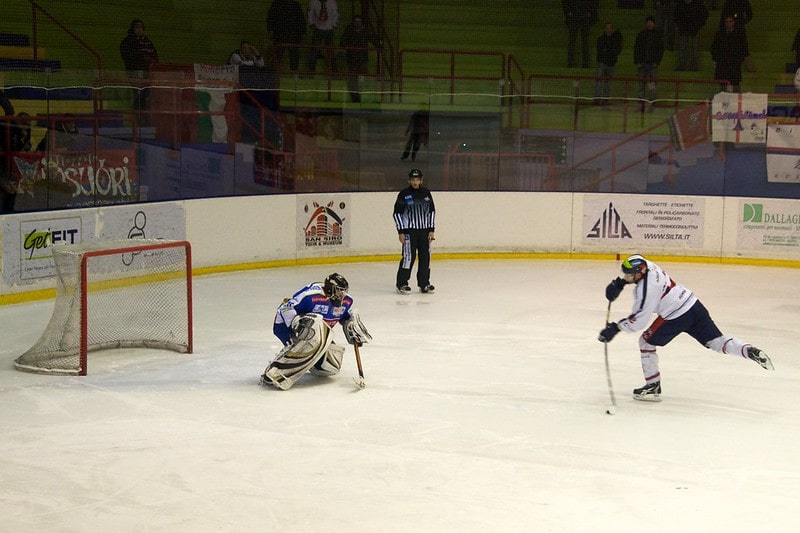
12. The average North American hockey rink is about 200 feet long and 85 feet wide, and regulation hockey nets are six feet wide and four feet tall.
13. Just as murky as the origins of the ice hockey puck are the details concerning the origin of ice hockey as a sport. Some credit the origins of ice hockey as dating back as far as the 1700s where a variety of the game played by the French and Irish. Others say it was not until the mid-1800s in Ontario Canada when Canadians would use homemade sticks and skate on frozen ponds.
14. The Canadian account of the origins of ice hockey is the more popular account of the sport’s history. So much so that the sport is considered to be a Canadian sport.
15. To further the notion of Ice Hockey as a Canadian sport, the Hockey Hall of Fame is located in Toronto, Ontario — the city where some of the earliest version of the game can be traced to.
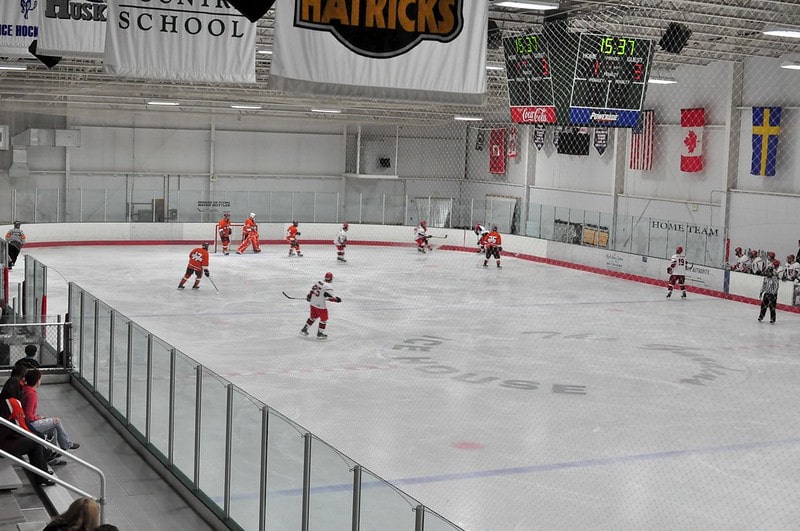
16. While the Hockey Hall of Fame is in Toronto, Ontario, it is Montreal that holds the record for the most wins. Montreal Canadiens (the heart of Canada’s French-speaking population) have won the most Stanley Cups in the history of the National Hockey League (NHL). They have a total of 24 wins, with their last win being in 1993. Perhaps there is a French connection to hockey’s history after all.
17. Speaking of Montreal Canadiens’ dominance in the sport, the 1956 Montreal team had a total of 12 players who would go on to become Hall of Famers.
18. Montreal Canadian players not only dominate the sport, they also revolutionized it. Jacque Plante, a Montreal Canadian player, is credited with creating the modern goalie mask. Plante first wore a face covering in his November 1, 1959 game. Clint Benedict also wore a leather mask for a few of the games he played during the 1930 season.
19. 1974 was the end of maskless Ice Hockey. In 1974, the Pittsburg Penguins’ Andy Brown became the last goalie to play a game without a mask.
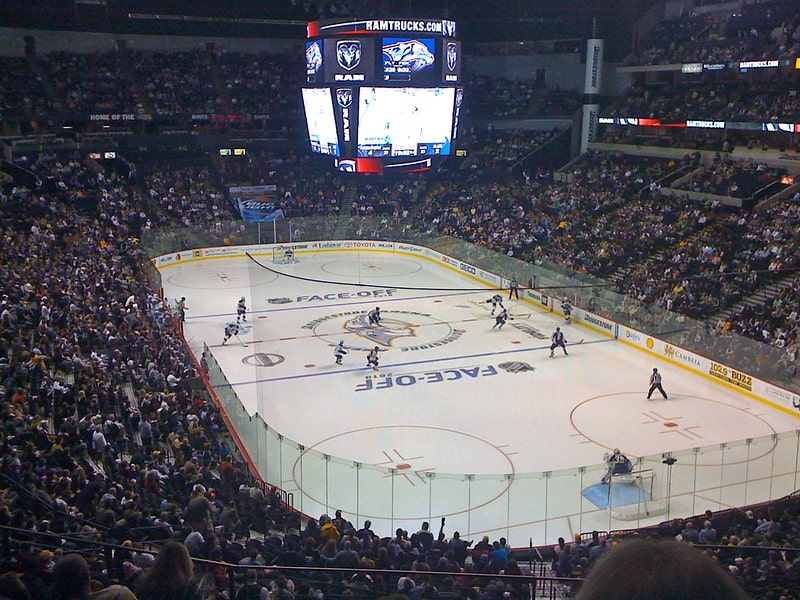
20. The first recorded indoor ice hockey game occurred on March 3, 1875, at the Victoria Skating Rink in Montreal, Canada. Organized by James Creighton, two teams competed using basic rules and a wooden puck. The game showcased the fast-paced and exciting nature of the sport.
21. Zdeno Chara’s remarkable feat in 2012 left a lasting mark in NHL history as he unleashed the fastest recorded slapshot ever witnessed in the league. The slapshot had a staggering velocity of 108.8 miles (175.1 kilometers) per hour.
22. In 1970, the Pittsburgh Penguins made a pioneering move in the NHL by becoming one of the first teams to introduce player names on the back of their jerseys. This decision marked a significant departure from tradition and brought a new level of personalization to the game.
23. The oldest player to ever play in an NHL game is Gordie Howe, who played his final game at 52 years and 11 days.
24. Wayne Gretzky, widely regarded as the greatest hockey player of all time, etched his name into the NHL record books with an astonishing achievement—holding the record for the most career goals in the league’s history. Gretzky’s remarkable tally stands at an unmatched 894 goals.
25. The New York Rangers’ “Curse of 1940” refers to their failure to win the Stanley Cup again until 1994, despite making several playoff appearances in the interim.

26. The term “hat trick” holds a special place in the lexicon of ice hockey, tracing its origins to a delightful tradition that emerged when fans, overwhelmed by sheer excitement and admiration, would joyfully toss their hats onto the ice. This tradition unfolded as a way to honor and celebrate a player’s remarkable achievement.
27. The first NHL All-Star Game was held in 1934, with the benefit proceeds going to the family of Ace Bailey, a player who suffered a career-ending injury.
28. The longest game in NHL history was played on March 24, 1936, between the Detroit Red Wings and the Montreal Maroons. It lasted six overtimes, totalling 116 minutes and 30 seconds of extra time.
29. The legendary NHL coach Scotty Bowman holds the record for the most Stanley Cup victories as a head coach, with nine championships to his name.
30. Within the intricate fabric of ice hockey, a unique and camaraderie-filled tradition exists among the goaltenders that sets them apart—the revered “goalie union.” Before each game, these masked guardians of the net partake in a time-honored ritual, an exclusive handshake shared only between them.
31. The original Stanley Cup was only 7.28 inches (18.5 cm) tall and was awarded to the champions from 1893 to 1950.
32. The Edmonton Oilers etched their name in NHL history with a groundbreaking decision that forever changed the landscape of jersey retirements in professional hockey. They became the first team to retire a player’s jersey while he was still an active player, and that player was none other than the iconic Wayne Gretzky, who donned the number 99.
33. The fastest natural hat trick in NHL history was scored in just 21 seconds by Bill Mosienko of the Chicago Blackhawks on March 23, 1952.
34. The penalty shot, a one-on-one opportunity for a player to score against the goaltender, was introduced to the NHL in the 1934-1935 season.
35. A pivotal moment occurred in 1892: one of the first recorded women’s ice hockey games. This groundbreaking event took place between the women of Queen’s University and the women of McGill University, setting the stage for the emergence and growth of women’s hockey as a formidable and beloved sport.
36. In a momentous year for ice hockey and the Olympic Games, 1924 witnessed the formal inclusion of ice hockey as an official Olympic sport. The Winter Games, held in Chamonix, France, marked the historic debut of ice hockey on the Olympic stage.
37. In 1925, the Victoria Cougars etched their names in hockey lore, becoming the last non-NHL team to claim the illustrious Stanley Cup.
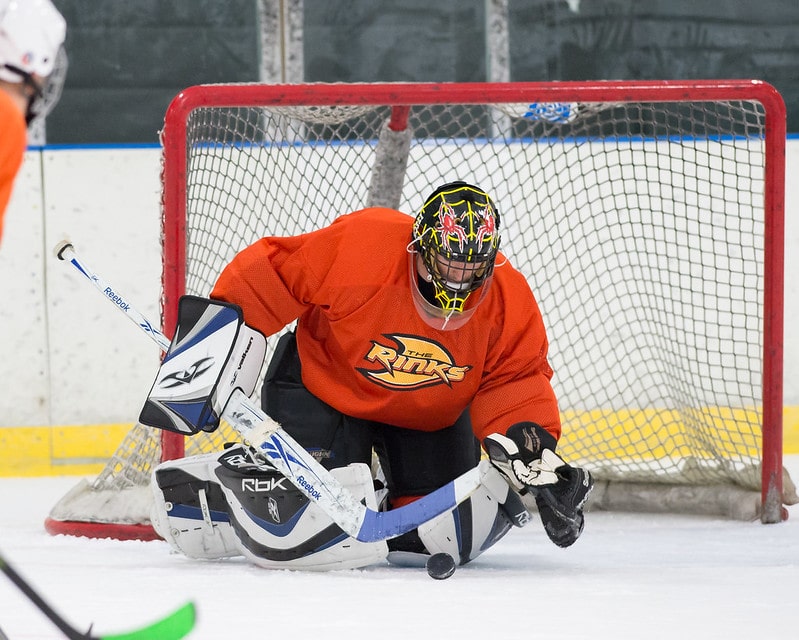
38. The first NHL player to score 50 goals in 50 games was Maurice “Rocket” Richard of the Montreal Canadiens in the 1944-1945 season.
39. The goaltender’s crease, the area in front of the net where only the goaltender is allowed, was introduced in the NHL in the 1938-1939 season to protect the goalie from interference.
40. North America’s oldest indoor ice hockey rink is the Glace Bay Miners’ Forum in Nova Scotia, Canada. Opened in 1939, it continues to be used for games and events to this day.
41. Ice hockey became an Olympic sport for women relatively late, debuting in the Winter Games of 1998 in Nagano, Japan. The United States emerged as the inaugural gold medalist in women’s ice hockey at the Olympic level.
42. The longest suspension in NHL history was handed to Marty McSorley of the Boston Bruins. In 2000, McSorley received a 23-game suspension for hitting Vancouver Canucks player Donald Brashear in the head with his stick during a game.
43. In 1927, the Boston Bruins became the first team in NHL history to feature numbers on the back of their jerseys. Other teams followed suit in subsequent years.

44. The coveted Stanley Cup outdates the NHL by a full 24 years. That is, the Stanley Cup was created in 1893, while the NHL was officially established in 1917 on November 22.
45. The Stanley Cup was named after Canadian Governor General Lord Stanley of Preston. Governor General Lord Stanley of Preston donated the trophy, which was 7-inches in height at the time of the donation.
46. The Stanley Cup has been awarded every year since 1914, excepting two instances in history. In 1919, during the Spanish Flu pandemic, and in 2005 during the NHL lockout, the Stanley Cup was not awarded.
47. Winners of the Stanley Cup has snacks in the trophy. Much bigger than the 7-inches of the original Stanley Cup, players from the winning team get a full day with the trophy and often participate in the tradition of filling the trophy with snacks and eating them from ‘The Cup.’ Pun intended.
48. In addition to taking part in trophy snacking, Stanley Cup winners (players, teams, and executives) alike all have their names engraved on the trophy (we can begin to see why it has grown significantly from the original 7-inches in size).
49. There is a total of 15 women who have their names engraved on the Stanley Cup trophy. No they were not players. You guessed it, they were team owners and executives.

50. The first million-dollar contract in the sport was awarded in 1971. While today’s professional hockey player may be used to player contracts in the millions, this was not always so. In 1971, Bobb Orr became the first player to receive a million-dollar contract when the Boston Bruins signed him to a five-year contract at a rate of $200,000.00 for each year.
. . . continue reading on the next page
